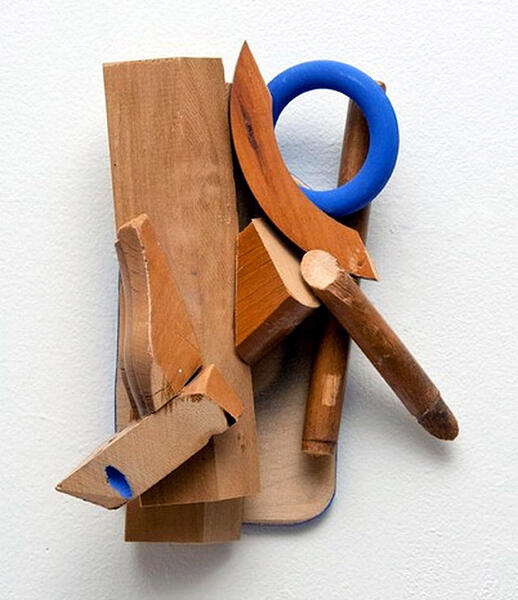Ana Tiscornia
Alejandra Von Hartz, Miami
“Other impertinences”, the most recent solo show of Ana Tiscornia (born in Uruguay in 1951 and living in New York since 1991) continues her deeply rooted dialogue with memory and oblivion, through different channels.

From those blurry portraits that rendered the identity of the person portrayed indistinct, the artist now shifts her attention and applies that narrative which has been a leitmotif in her work to forms that evoke architectural structures − she graduated as an architect at the Universidad de la República, Montevideo − assembled through the deconstruction of other domestic objects or industrial materials which have been cut out and reassembled into an art object which can be read as an almost concrete abstraction or as a typical architectural blueprint featuring different layers and levels. In these works, Tiscornia establishes discreet relationships between architecture as a constructive language par excellence and destruction, dislocation, and displacement as a possible map of social oblivion, “which,” as the artist has written, “not only shows but also recovers scattered fragments of a utopian project. Somehow what I am trying to do is not to reconstruct them but to organize them into a new project.”
We are therefore in the presence of art objects endowed with a deceitful semiotic lightness. At first sight they may appear to be harmonious abstract geometric compositions, but in fact they convey a deep reflection that evokes basic elements of human civilization such as the house and its furniture, factors that anchor and mark our lives and our culture, forced to reinvent themselves in the face of geographic displacement and relocation − a nomadic condition that has distinguished our species from the very dawn of its existence. The works reflect a construction, deconstruction and reconstruction sequence which in a certain way re-embodies a modernist poetics: regardless of the Dadaist flavor that the found object always evokes, the structure of angles and planes employed by the artist when cutting and assembling the different elements refers us rather to the cubist spirit.
The exhibition is complemented by a series of new large-format paintings on canvas and assemblages that are the result of a previous series of collages that Tiscornia created by arbitrarily superimposing and rearranging elements cut out from house plans. The paintings are a sort of graphic, condensed and synthetic version of the assemblages, connoting to a different level the subject of the habitat, or its transformation through memories to which the rest of the works allude. However, these are paradoxically the most updated works in the exhibit, since they incarnate in a different way that spirit of the time, marked by the influence of the new technologies that are allowing us to rescue memory from oblivion, that major trait of the twenty-first century Zeigeist.
-
 Situation with Blue Spot, 2012,
Situation with Blue Spot, 2012,
Wood and paint, 9 x 7 x 3.5 in / Madera y pintura, 23 x 18 x 9 cm.
Courtesy/Cortesía Alejandra Von Hartz Gallery




